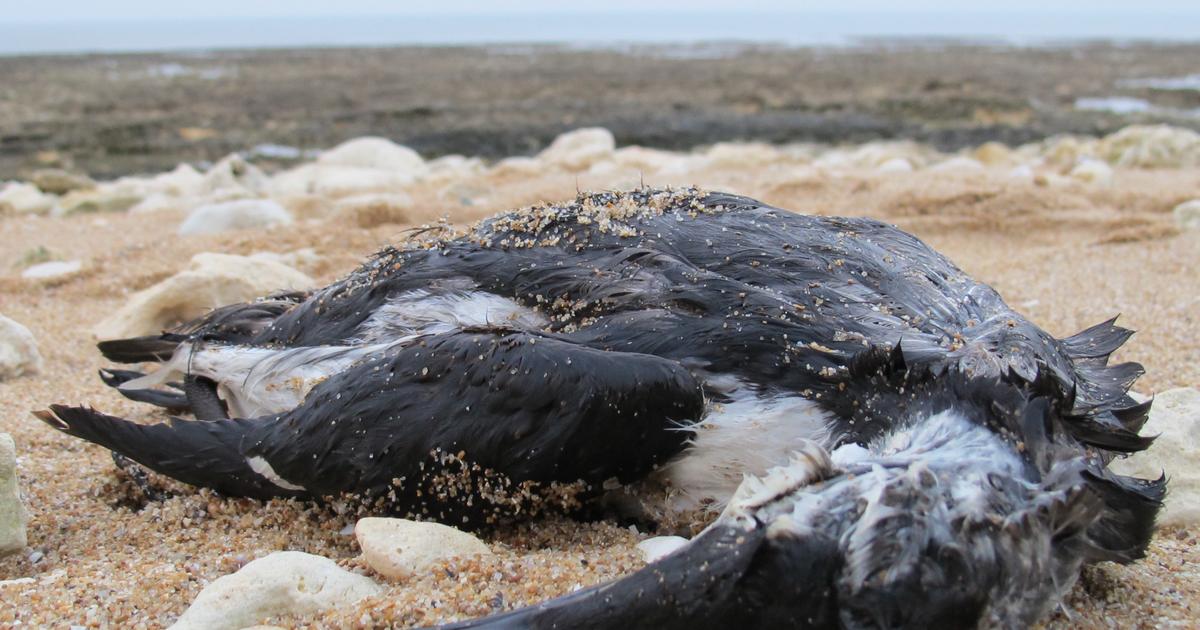Many dead young storks: Bird flu hits Lower Saxony with full force
Created: 09/14/2022, 14:03
A wave of bird flu is rolling across the country, and numerous storks are dying in Lower Saxony.
An expert speaks of a "moderate catastrophe".
Berne – A threatening wave: The bird flu epidemic, which has persisted over the summer, is clearly jeopardizing the breeding success of young storks in north-western Lower Saxony.
This year, far fewer storks have made their way south to their winter quarters in the past few weeks, said Udo Hilfers, head of the Wesermarsch stork care station in Berne.
There are still no complete figures on the extent of bird flu among the stork population, even if this is likely to be devastating.
According to Hilfers, less than a third of the young animals born in the Wesermarsch are said to have survived the virus.
To classify: More than 200 pairs of storks breed in the region every year, as reported by hna.de.
Many young storks in Lower Saxony fall victim to bird flu
Stork in the Wesermarsch: The bird flu has significantly worsened the breeding success of many animals.
© Sina Schuldt/dpa
"It was a medium-sized catastrophe," emphasized Hilfers.
It is unusual this year that the virus is now also rampant in northern Germany after the severe winter wave.
"The bird flu was there all summer long and this time it caught the storks." Between the North Sea coast and Dümmer, many storks fell ill with the highly contagious virus and died.
According to experts, bird flu also led to major losses in seabird colonies and poultry farms on the coast this summer.
The omens were actually good for the rearing of young storks this year, said Hilfers.
In 2019, when the conditions were similar, many young storks were born.
After three years, i.e. 2022, most storks would start breeding.
The bird flu was a moderate catastrophe for the stork population in Lower Saxony.
Udo Hilfers, head of the Wesermarsch stork care station
“A lot of these storks have returned this year and have looked for new breeding grounds.
That was very positive,” says Hilfers.
Sufficient food was available and wet or cold conditions did not significantly disturb rearing this summer.
But then the bird flu caught both young and parent animals.
"It was never such a problem before," said the expert.
Chasing the heat: Most of the storks are now flying south
As a result, the Wesermarsch stork care station took in fewer storks for care and rearing in the summer - out of concern that the highly contagious disease could be introduced into the station.
The majority of the storks have already made their way south, to Africa and Spain in August.
The white stork migrates to warmer regions, the offspring first.
also read
After a serious car accident: Fourth young man died
Lower Saxony has rejected the extension of the deadline for property tax in 2022
According to Hilfers, there are only a few stragglers in the Wesermarsch who are leaving in the next few days.
But there are also storks, for example from Scandinavia and Schleswig-Holstein, which only migrate to the north of Lower Saxony and are now wintering there, said Hilfers.
In mild winters, the food supply is then sufficient.
(rdg/lni)
The animal protection organization Peta has reported to an Oldenburg group because of the painful fattening conditions of turkeys.
African swine fever (ASF) has now also reached Lower Saxony: Questions and answers about the animal disease.
The poisonous Nosferatu spider is now also spreading in Lower Saxony.
Avian flu: A great danger
Bird flu is a viral disease also known as avian influenza.
The term derives from the Latin word avis for bird.
According to the Tropical Institute, the influenza A viruses (H5N1, H5N8, H7N9) primarily affect birds – especially poultry such as turkeys or chickens.
Veterinary medicine divides bird flu viruses into less pathogenic (low pathogenic) and very severely pathogenic (highly pathogenic) strains.
The highly pathogenic viruses of the subtypes H5 and H7 cause severe damage to livestock in poultry.
A large proportion of the infected poultry die from the disease, which explains the term "bird pest".
Influenza A viruses can also cause illnesses in humans.
These are comparatively rare, since bird flu is not particularly contagious for humans.
However, the disease can take a severe course in humans and, in extreme cases, even lead to death.
In 2005, the H5N1 bird flu virus killed several hundred people.


/cloudfront-eu-central-1.images.arcpublishing.com/prisa/GLQIPWOC3VBT3BKZRNAZOQJEQU.jpg)






